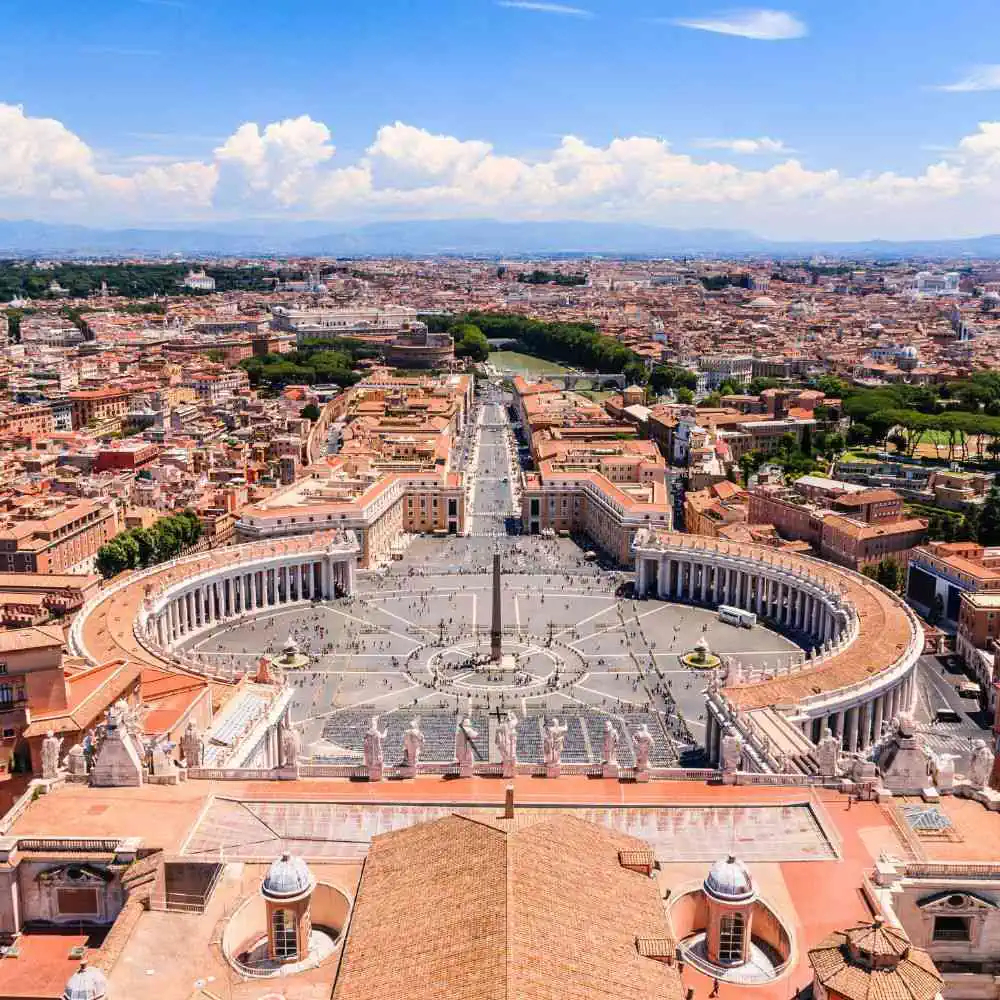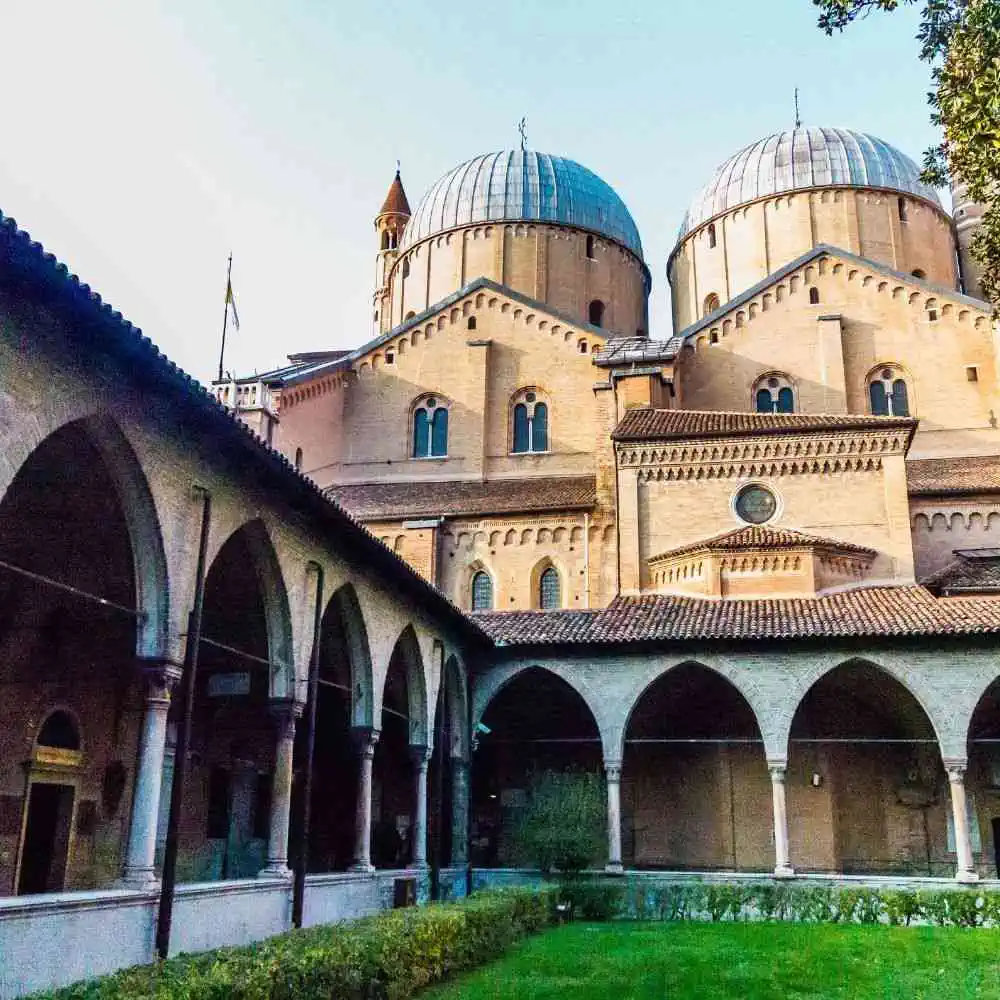You will depart from Padova, located right in the city center of Padova, and enjoy the beautiful scenery of the journey while you arrive in Roma Termini, also located in the heart of Rome.
Trains from Padova to Romefrom € 30.00
Trains from Padova to Rome
Travelling by train: Padova - Rome
Are you ready for a thrilling train adventure through picturesque landscapes and historic cities? Hop aboard the fast train from Padova to Rome and experience the beauty and charm of Italy. This is your ticket to an unforgettable journey!
Embarking from Padova, a city renowned for its medieval architecture and rich cultural heritage, you'll make your way to Rome, the eternal city. The journey covers a distance of approximately 460 kilometers and takes about 3 hours and 15 minutes, making it the shortest duration option available.
Padova's main train station, Padova Centrale, is your starting point. From here, you'll travel south, passing through a myriad of charming towns and cities along the way. As you glide through the Italian countryside, you'll catch glimpses of beautiful vineyards, rolling hills, and ancient ruins.
The first significant city you'll come across is Bologna. Known for its culinary delights, historic architecture, and vibrant atmosphere, Bologna is a city that should not be missed. Take a moment to indulge in an authentic Italian meal or explore its magnificent Piazza Maggiore.
Continuing your journey, the next notable stop is Florence, the birthplace of the Renaissance. Admire the iconic Duomo, stroll across the Ponte Vecchio, and immerse yourself in the captivating art scene of this enchanting city.
As you approach the final leg of your journey, you'll pass through the iconic city of Siena. Famous for its medieval charm and the historic Palio horse race, Siena will transport you back in time. Explore the ancient streets and visit the breathtaking Siena Cathedral.
Finally, you'll arrive at your destination, Rome. Steeped in history, Rome offers a treasure trove of iconic landmarks such as the Colosseum, Vatican City, and the Roman Forum. Don't forget to toss a coin into the Trevi Fountain for good luck!
From Padova to Rome, each city along this train journey offers a unique experience. Whether it's indulging in delicious local cuisine, marveling at historic architecture, or immersing yourself in art and culture, this adventure is guaranteed to leave a lasting impression.
So, grab your camera and embark on this unforgettable train journey from Padova to Rome. The heart of Italy is waiting to be explored!

Journey details
How long does that train from Padova to Rome take?
The train journey from Padova to Rome takes approximately 3 hours and 35 minutes. Sit back, relax, and enjoy the scenic ride through the beautiful Italian countryside.
What is the fastest journey from Padova to Rome by train?
The fastest journey from Padova to Rome by train takes around 3 hours and 15 minutes. This high-speed train ensures a quick and comfortable travel experience.
How much does the train cost from Padova to Rome?
The train ticket from Padova to Rome costs approximately €50 to €80, depending on the train type and class of service. It's wise to book your tickets in advance to secure the best prices.
How much does the Padova to Rome?
Yes, there are direct trains available between Padova and Rome. You can hop on board and enjoy a seamless journey without any transfers or additional stops.
What is the distance from Padova to Rome by train?
The distance from Padova to Rome by train is approximately 500 kilometers. The train will take you through the heart of Italy, offering breathtaking views along the way.
Which are the cities that the train stops from Padova to Rome?
The train from Padova to Rome makes stops at various cities along the route, including Bologna, Florence, and Orte. These cities provide an opportunity to explore more of Italy's rich culture and history.
Buy train tickets from Padova to Rome
Traveling by train from Padova to Rome is an easy and comfortable journey. RailClick is the best way to travel Europe by train.
Padova: Places to see
Welcome to Padua, Italy! As the fourth largest city in the Veneto region, Padua is known for its rich culture, lively atmosphere and undeniably stunning architecture. Here's a list of seven must-see places to visit while in Padua, with historical and architectural information, as well as practical details and insider tips.
Basilica of St. Anthony: Built in 1307, this Gothic-Romanesque basilica draws 4 million visitors annually and is among the most important Catholic sanctuaries in the world. Its interior is richly decorated with mosaics, frescoes and sculptures. Admission is free, although there's a €2 charge to visit St. Anthony's tomb. Take note of the 60cm silver reliquary containing his tongue - a priceless relic!
Palazzo della Ragione: Open to visitors since 1218, this imposing palace was originally used for important civil trials and is now the seat of the city’s courtrooms. It boasts an enormous, centuries-old wooden ceiling, grand marble staircases and a rooftop terrace with views of Padua’s red-tiled roofs. Admission is free.
Scrovegni Chapel: This 14th-century chapel is renowned for its frescoes painted by Giotto. Located in the city center, it’s easily accessible on foot or by bus from Padua's main train station. Admission is €12 per adult and the visit must be booked in advance.
Prato della Valle: This 90,000-square-meter oval square is the largest in Europe. It’s known for its Venetian-style monuments, lush gardens and a central canal. Prato della Valle is also a popular spot to snack on Italian specialties. Entrance to the square is free.
Caffè Pedrocchi: Built in 1831 and open 24/7, this café is known for its rich décor and a long list of coffee-based drinks. It also serves classic Italian snacks like paninis and tiramisu. Located right in the city center, Caffè Pedrocchi is an easy and delicious spot to grab a bite. Prices vary.
Caffé Florian: This stunning café is one of the oldest coffee houses in the world, having been open since 1720. Adorned with chandeliers and velvet-covered chairs, it’s the perfect place to relax with a cappuccino. Prices start at €7.
Botanical Garden: Located on the grounds of Palazzo Bo, the University of Padua's botanical garden contains over 4,500 species of plants from all over the world. It's open to visitors from April to October, with admission costing €6.50 for adults.
Padua is a must-visit destination for history buffs and anyone looking for a memorable Italian experience. There's something to please everyone in the city, from the vibrant café culture to the stunning architecture. With this list of must-see historical and architectural sites, you'll be sure to make the most out of your trip to Padua!

Rome: Places to see
As one of the world’s oldest cities, Rome is home to some of the oldest and most impressive architecture in the world. From the historic Colosseum to the Pantheon, there is no shortage of beautiful and historically significant sites to visit in this iconic city. No trip to Rome is complete without exploring its history and culture, and tasting the delightful and varied dishes! Here are some of the must-see sites and must-try dishes when visiting Rome.
Colosseum: Located in the center of Rome, the Colosseum is considered one of the most iconic and iconic structures in the world. This ancient amphitheater was built in 72-80 AD, and was used for gladiator battles and entertainment in the Roman Empire. The entrance fee is 12 euros (16 euro with an audio guide). Options to skip the line are available, giving you more time to explore and take in the history!
Pantheon: An ancient Roman temple located in the heart of Rome, the Pantheon is an impressive and well-preserved structure with a unique and fascinating history. It was built in the 2nd century AD and is now a church. Admission is free, but it's best to get there early as the lines can get long.
Villa Borghese: This is one of Rome's largest public parks, located in the center of the city near the Spanish Steps. It's a great place to take a stroll and admire the lush gardens, sculptures, and art. Entrance to the park is free.
Food in Rome: No trip to Rome would be complete without trying some of the local delicacies. Pizza, pasta, gelato, and tiramisu are all popular dishes and must-tries when visiting Rome. For a more traditional and unique experience, try some of the local cuisine, like Supplì (fried rice balls), Carciofi alla giudia (fried artichoke), and cacio e pepe (cheese and pepper pasta).
Rome is an incredible city with a long and fascinating history. From the Colosseum to the Pantheon, there's no shortage of incredible architecture, cultural sites, and delicious food to explore. Whether visiting for a few days or a few weeks, Rome is sure to leave you with lasting memories.

Padova: Main train stations
Padua, a city located in North-Eastern Italy, is home to the main train station of the city, Padua Train Station. This station is a major hub for the region and connects Padua to Venice and other main cities in the area. There are also a few other smaller train stations in the city, such as the Padova Scalo Station.
Padua Train Station is located in Piazzale della Stazione, at just few minutes away from the city center. It is open and operating 24/7 and offers a wide range of services, such as ticket machines, bar, luggage storage and contact telephone +39 0498 760060.
- Padua
Rome: Main train stations
The main train station of Rome is Roma Termini, the largest and busiest rail station in Italy. Located in the city center, it is connected to the major cities of the country. In addition, there are several other important train stations in Rome, such as Ostiense, Tiburtina, Trastevere and Termini Imerese.
Roma Termini is located at Piazza dei Cinquecento, Rome, Italy. It has a wide variety of services, like book store, electronic store, banks, ATM, telephones, restaurant and bars, souvenir shops, and much more. It also has 24-hour open services, like left-luggage services, information desk, ticket office, and a help desk in case of emergencies.
- Roma Termini
- Roma Fiumicino Aeroporto
- Roma San Pietro
- Roma Trastevere
- Roma Tiburtina
- Roma Ostiense
- Roma Nomentana
- Roma Tuscolana
- Gemelli
- Quattro Venti
- Roma San Filippo Neri
- Roma Prenestina
Padova - Rome: How to get the best deals
Book in Advance:
Just like with airfares, train ticket prices tend to rise as the departure date gets closer. Booking weeks or even months in advance can save you a significant amount.
Travel During Off-Peak Hours:
Avoid traveling during peak times such as weekday mornings and evenings. Opt for midday, late evening, or mid-week rides when there's less demand.
Consider Slower Trains or non direct routes:
Express or high-speed trains might save time, but they're often pricier. Opting for regional or slower services can reduce your fare.
Look for Special Deals and Promotions:
Train operators occasionally have promotions or special deals, especially during off-peak seasons. It's worth signing up for newsletters. Additionally, there are sometimes group or return ticket discounts, so consider these options if they fit your travel plans.
- Contact Us


